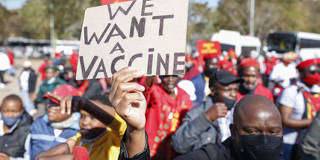Given strong odds that we will face another pandemic, the international community is rightly engaged in discussions about how to do better next time. But the latest United Nations agreement on the issue offers mere platitudes, rather than the kind of concrete measures needed to stay ahead of a new pathogen.
NEW YORK – Humanity was caught off guard by the COVID-19 pandemic, even though we had effectively been warned by smaller-scale outbreaks – of SARS, Ebola, MERS, and avian flu – for decades. US President Barack Obama, recognizing the true nature of the threat infectious diseases might pose, even created a Global Health Security and Biodefense unit within the National Security Council. But Donald Trump, in his infinite wisdom, shut it down.
Given the strong odds that we will face another pandemic sooner or later, the international community is rightly engaged in discussions about how to do better next time. Last month, a United Nations High-Level Meeting on Pandemic Prevention, Preparedness, and Response produced a “political declaration” that was hailed as a landmark. The 14-page draft acknowledged that, as Carolyn Reynolds, co-founder of the Pandemic Action Network, has put it, PPPR “is so much more than a national health issue; it is a national and global security and economic issue. Like climate change, pandemics are a global systemic risk and existential threat to humanity, and we need to treat them as such.”
But isn’t this just stating the obvious? While some have hailed the agreement as “historic,” it was accompanied by no firm commitments from governments.

NEW YORK – Humanity was caught off guard by the COVID-19 pandemic, even though we had effectively been warned by smaller-scale outbreaks – of SARS, Ebola, MERS, and avian flu – for decades. US President Barack Obama, recognizing the true nature of the threat infectious diseases might pose, even created a Global Health Security and Biodefense unit within the National Security Council. But Donald Trump, in his infinite wisdom, shut it down.
Given the strong odds that we will face another pandemic sooner or later, the international community is rightly engaged in discussions about how to do better next time. Last month, a United Nations High-Level Meeting on Pandemic Prevention, Preparedness, and Response produced a “political declaration” that was hailed as a landmark. The 14-page draft acknowledged that, as Carolyn Reynolds, co-founder of the Pandemic Action Network, has put it, PPPR “is so much more than a national health issue; it is a national and global security and economic issue. Like climate change, pandemics are a global systemic risk and existential threat to humanity, and we need to treat them as such.”
But isn’t this just stating the obvious? While some have hailed the agreement as “historic,” it was accompanied by no firm commitments from governments.